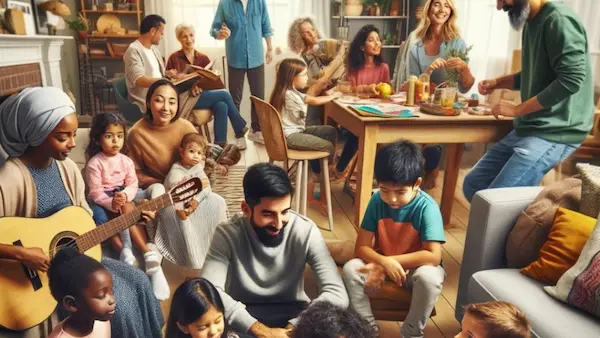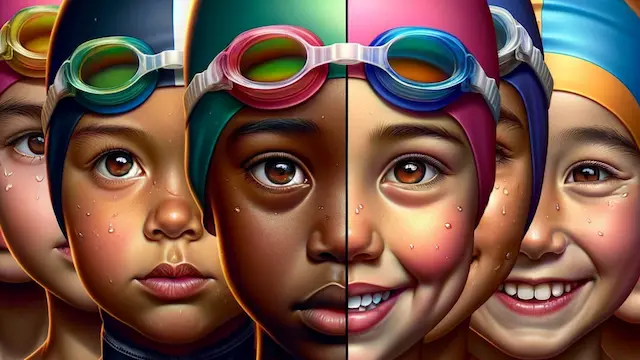84 Ways to Express Hope in Different Languages and Cultures

Hope is a universal concept, but its expression can vary greatly across different cultures and languages.
Each language has its own way of expressing the idea of hope, often rich with unique nuances and cultural significance.
Exploring these variations can deepen your appreciation for how people around the world perceive optimism and resilience.
For instance, in Spanish translation, “esperanza” means hope and often implies a sense of expectation or anticipation for better days. Similarly, in Japanese, “希望” (kibō) carries meanings of both hope and aspiration, reflecting a strong desire for a positive future.
Understanding these subtle differences can deepen your appreciation of what hope means in various cultural contexts, inviting you to reflect on your own perspectives.

As we explore the concept of hope in different languages, you'll find that this powerful emotion goes beyond words, creating a sense of connection among people.
Learning about these varied interpretations can offer new insights and may inspire you to think about your own hopes in fresh and meaningful ways.
“We must accept finite disappointment, but never lose infinite hope.” – Martin Luther King Jr.
The Meaning Of Hope And Its Cultural Significance
Hope is a universal concept, present in every culture and language. It represents an optimistic state of mind, often connected to future aspirations.
In different languages, the beautiful word for hope carries unique connotations. For example:
- French: “Espoir” conveys both desire and expectation.
- German: “Hoffnung” reflects a strong belief in positive change.
- Akan (Twi): “Anidaso” is closer to “expectation,” suggesting a strong belief that something will happen, often based on past experience or evidence.
These terms show how hope influences cultural perspectives. It serves as a powerful motivator, helping individuals persevere through challenges.
Hope is often portrayed in literature and art as a driving force that shapes characters' journeys and inspires resilience in communities.
From classic novels that explore the triumph of the human spirit to paintings that capture the light amidst the darkness, these creative expressions show how hope motivates individuals to persevere through challenges and envision a better future.

Wondering how to introduce your kids to different cultures and languages in a fun, engaging way?
Learning about the world doesn't have to feel like another task – it can be an exciting adventure for the whole family.
In many cultures, rituals and traditions center around hope, such as:
- New Year Celebrations: A time for new beginnings and setting hopeful intentions for the year ahead, celebrated globally.
- Festivals of Lights: Symbolizing the triumph of hope over darkness, such as Diwali in India, Hanukkah in Jewish culture, and Christmas celebrations worldwide.
- Harvest Festivals: In many African communities, like the Yam Festival among the Akan people of Ghana and Nigeria, these festivals express gratitude for a bountiful harvest and hope for future abundance.
- Spring Festivals: Events such as Holi in India and Nowruz in Persia celebrate renewal and the hope for a fruitful season.
- Rainmaking Ceremonies: Practiced by the Shona people in Zimbabwe and other agricultural communities, these ceremonies express hope for rain to ensure a good harvest and the community's well-being.
- Rites of Passage: In African cultures, like the Maasai coming-of-age ceremonies in Kenya and Tanzania, these traditions mark significant life transitions with hopes for a prosperous future.
- Thanksgiving: A tradition commonly celebrated in North America to express gratitude and look forward to continued blessings and hope for the future. Similar traditions of giving thanks are observed in various cultures around the world.
- Wishing Trees and Lantern Festivals: In some Asian cultures, these traditions involve writing hopes and wishes on paper to be tied to trees or released in lanterns, symbolizing hope rising to the heavens.
- Ancestor Worship and Libation: Common in many African cultures, these rituals seek the guidance and blessings of ancestors, grounded in hope for family prosperity and protection.
- Healing Ceremonies: Among the San people of Southern Africa, traditional healing dances and rituals express hope for spiritual and physical healing.

Baby Names Inspired by Hope
Many cultures even use “hope” as an inspiration for baby names. In Russian and other Slavic cultures, “Nadezhda” (Надежда) means “hope,” with “Nadia” being a common name derived from it. In English, baby girl names such as “Hope” are chosen to inspire positivity, while in Akan (Twi), “Anidaso” reflects hope and expectation.
These baby names show a family's hopes for their child's future and highlight how important hope is in shaping personal and cultural identities worldwide.
From these many examples, it's clear that hope is not just a feeling but a significant part of many cultures. It brings people together and encourages collective growth.
Embracing hope can improve your daily life, encouraging positivity and strength during difficult times.
“Hope is not the conviction that something will turn out well, but the certainty that something makes sense, regardless of how it turns out.” – Václav Havel
How To Say ‘Hope' In Different Languages
Languages around the world express the concept of hope in unique and diverse ways.
Here are some common translations that show how people across cultures interpret this idea.

A List Of Translations For Hope
- Afrikaans: Hoop
- Akan (Twi): Anidaso
- Albanian: Shpresë
- Amharic: ተስፋ (Tesfa)
- Arabic: أمل (Amal)
- Armenian: Հույս (Huis)
- Azerbaijani: Ümid
- Bengali: আশা (Āśā)
- Bosnian: Nada
- Bulgarian: Надежда (Nadezhda)
- Catalan: Esperança
- Chinese (Mandarin): 希望 (Xīwàng)
- Croatian: Nada
- Czech: Naděje
- Danish: Håb
- Dutch: Hoop
- English: Hope
- Esperanto: Espero
- Estonian: Lootus
- Finnish: Toivo
- French: Espoir
- Georgian: იმედი (Imedi)
- German: Hoffnung
- Greek: Ελπίδα (Elpída)
- Gujarati: આશા (Āśā)
- Hausa: Fata
- Hebrew: תקווה (Tikvah)
- Hindi: आशा (Āśā)
- Hungarian: Remény
- Icelandic: Von
- Igbo: Olileanya
- Indonesian: Harapan
- Irish: Dóchas
- Italian: Speranza
- Japanese: 希望 (Kibō)
- Javanese: Pangarep
- Kannada: ಆsha (Āśa)
- Kazakh: Үміт (Ümit)
- Khmer: ក្តីសង្ឃឹម (Kdei Songkhum)
- Korean: 희망 (Huimang)
- Kurdish (Kurmanji): Hêvî
- Lao: ຄວາມຫວັງ (Khwām Hvang)
- Latvian: Cerība
- Lithuanian: Viltis
- Macedonian: Надеж (Nadezh)
- Malay: Harapan
- Malayalam: പ്രത്യാശ (Pratyāśa)
- Maltese: Tama
- Maori: Tumanako
- Marathi: आशा (Āśā)
- Mongolian: Найдвар (Naidvar)
- Nepali: आशा (Āśā)
- Norwegian: Håp
- Odia: ଆଶା (Āśā)
- Pashto: هیله (Hila)
- Persian: امید (Omid)
- Polish: Nadzieja
- Portuguese: Esperança
- Punjabi: ਆਸ (Āsa)
- Romanian: Speranță
- Russian: Надежда (Nadezhda)
- Samoan: Fa'amoemoe
- Serbian: Нада (Nada)
- Sinhala: බලාපොරොත්තුව (Balāporottuva)
- Slovak: Nádej
- Slovenian: Upanje
- Somali: Rajada
- Spanish: Esperanza
- Swahili: Tumaini
- Swedish: Hopp
- Tagalog: Pag-asa
- Tamil: நம்பிக்கை (Nampikkai)
- Telugu: ఆశ (Āśa)
- Thai: ความหวัง (Khwām Whạng)
- Turkish: Umut
- Ukrainian: Надія (Nadiya)
- Urdu: امید (Umeed)
- Uzbek: Umid
- Vietnamese: Hy vọng
- Welsh: Gobaith
- Xhosa: Ithemba
- Yiddish: האָפענונג (Hoffnung)
- Yoruba: Ìrètí
- Zulu: Ithemba
This list provides a useful reference for exploring hope in different languages. How many did you recognize? I knew 5!
How To Practice Hope During Challenging Times
Practicing hope during difficult moments can help you maintain a positive outlook. Here are some simple strategies to encourage hope in your life:
Set Small Goals: Break tasks into manageable steps. Celebrating small achievements can boost your morale.
Positive Affirmations: Repeat encouraging phrases to yourself. For example, say, “I can overcome this challenge.”
Reach Out for Support: Connect with friends or family. Sharing your feelings can build hope through collective strength.
Visualize Success: Spend a few moments each day visualizing a positive outcome. This can help focus your thoughts on what could go right.
Engage in Gratitude: Write down three things you are thankful for each day. Focusing on gratitude can shift your mindset.
Limit Negative Inputs: Be mindful of the content you consume. Limiting exposure to negative news, social media, and pessimistic conversations, especially when coping with your own loss—whether it's the loss of a loved one, a job, or a personal setback – can help maintain your hope.
Practice Mindfulness: Take a few minutes to breathe deeply and center yourself. Mindfulness can help you stay present and hopeful.

Hope isn't just about wishing for a better time; it's also about actively choosing a positive outlook, even when times are tough.
I’m reminded of a song from a show I used to watch called Homefront on AFN (American Forces Network) while living in Germany. The song goes:
“You've got to ac-cent-tchu-ate the positive
E-lim-i-nate the negative
Latch on to the affirmative
Don't mess with Mr. In-Between.”
These lyrics have stuck with me over the years, and I often catch myself reciting them.
They serve as a fun reminder to focus on the positive and let go of the negative – a simple yet powerful way to keep hope alive.
Incorporating positive practices into your daily routine can help maintain hope, even during tough times.
I know lists like these can feel overwhelming, but being intentional about them has made a difference for me.
Focusing on the positive truly helps to navigate through difficult moments.
“Where there is no hope, it is incumbent on us to invent it.” – Albert Camus
Teaching Hope To Future Generations
Teaching hope is key to raising resilient individuals. There are many ways to help children understand and embrace this important concept.
Here are some strategies that can make a difference:
- Encouraging Expressions: Invite children to express their dreams and aspirations. This can help them visualize their future and set goals.
- Storytelling: Share stories that highlight perseverance and triumph. Real-life examples can inspire them to remain hopeful.
- Positive Reinforcement: Acknowledge their achievements, no matter how small. Celebrating progress helps build a hopeful mindset.
- Creating a Supportive Environment: Surround children with positivity. Create spaces where they feel safe to share their thoughts.
- Modeling Hope: Demonstrate a hopeful attitude in your own behavior. Show how you approach challenges with optimism and focus on solutions.
- Incorporating Hope into Daily Conversations: Consider discussing hope regularly. For instance, when facing challenges, emphasize potential solutions, possible outcomes, and the value of an unexpected opportunity, helping children see the brighter side of situations.
A simple daily affirmation can also be effective. Encourage kids to repeat phrases like:
- “I can overcome obstacles.”
- “My dreams are possible.”
Additionally, engaging in community service can provide perspective. Helping others can show children the impact of a lot of hope in action.
By encouraging hope, you empower the next generation to face the world with confidence. Teaching them the value of hope equips them for life's challenges.

“Hope is being able to see that there is light despite all of the darkness.” – Desmond Tutu
Exploring the concept of hope shows its importance across different native languages and cultures.
Each language offers a unique way of expressing this powerful emotion, deepening our understanding of it.
Hope encourages us to strive for better days and connects cultures and communities.
The variety of expressions highlights how hope is a core part of the human experience.
By learning these words, you can connect with others and share your beliefs, creating bonds through a common understanding of hope.
Ultimately, no matter the language, hope helps us navigate life's challenges.
It's a reminder that we need more hope in our lives, and it's always there for us to tap into, offering strength and optimism.
IF THIS POST RESONATES WITH YOU, CONSIDER EXPLORING MORE OF OUR WEBSITE AND PINNING ONE OF THE IMAGES BELOW!
Thank you for your support.








